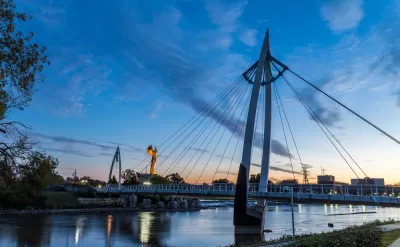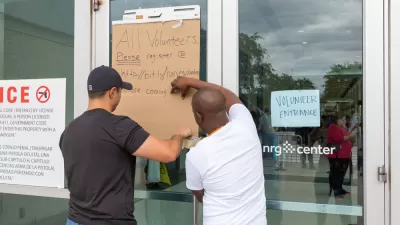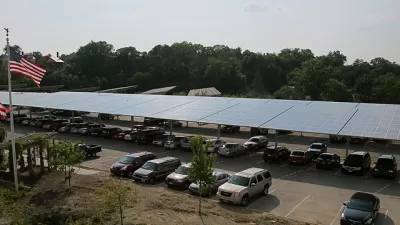FiveThirtyEight explores how planners in the Midwest are trying to get ahead of an intensifying climate.

Across the Midwest, weather patterns are changing fast. Storms are starting earlier and hitting harder, and floods are coming faster and with less warning. And what used to be considered unusually intense rainfall—a "mega-rain" event—is quickly threatening to become the new normal. FiveThirtyEight's Ella Koeze delves into the fundamental challenges this shift poses to existing infrastructure, emergency management, and city planning efforts throughout the Midwestern states.
For one, the need to invest in more robust and durable infrastructure is becoming increasingly clear: "While the design standard has been to build roads, buildings and other infrastructure in a way that can withstand a hundred-year storm, some engineers are considering whether it's time to build for a 500-year storm, with the expectation that soon it might no longer be such a remote possibility," Koeze writes.
But before cities can start planning how to overhaul their major infrastructure, they need data they've never had before. "The precipitation estimates that city planners have relied on in making preparations for flooding are based on historical weather trends, not predictions of future trends," Koeze explains. "The estimates do not take into account how climate change might influence precipitation in the future." Until new prediction models are developed, planners are doing what they can—focusing on bolstering emergency systems.
More information and helpful infographics are on FiveThirtyEight.com.
FULL STORY: The Midwest Is Getting Drenched, And It’s Causing Big Problems

Planetizen Federal Action Tracker
A weekly monitor of how Trump’s orders and actions are impacting planners and planning in America.

San Francisco's School District Spent $105M To Build Affordable Housing for Teachers — And That's Just the Beginning
SFUSD joins a growing list of school districts using their land holdings to address housing affordability challenges faced by their own employees.

The Tiny, Adorable $7,000 Car Turning Japan Onto EVs
The single seat Mibot charges from a regular plug as quickly as an iPad, and is about half the price of an average EV.

Seattle's Plan for Adopting Driverless Cars
Equity, safety, accessibility and affordability are front of mind as the city prepares for robotaxis and other autonomous vehicles.

As Trump Phases Out FEMA, Is It Time to Flee the Floodplains?
With less federal funding available for disaster relief efforts, the need to relocate at-risk communities is more urgent than ever.

With Protected Lanes, 460% More People Commute by Bike
For those needing more ammo, more data proving what we already knew is here.
Urban Design for Planners 1: Software Tools
This six-course series explores essential urban design concepts using open source software and equips planners with the tools they need to participate fully in the urban design process.
Planning for Universal Design
Learn the tools for implementing Universal Design in planning regulations.
Smith Gee Studio
City of Charlotte
City of Camden Redevelopment Agency
City of Astoria
Transportation Research & Education Center (TREC) at Portland State University
US High Speed Rail Association
City of Camden Redevelopment Agency
Municipality of Princeton (NJ)





























